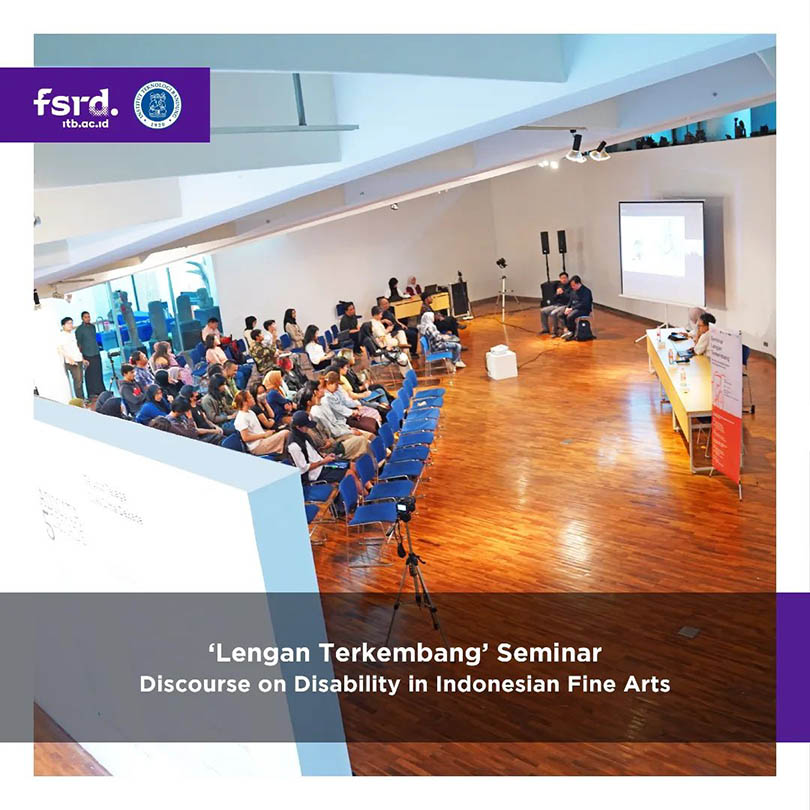

Agung Hujatnika
Over the past ten years, the frequency of activities involving people with disabilities (in the form of exhibitions and training and workshops) has indeed increased in Indonesia. Many disabled artists have joined in groups/communities. They have also held exhibitions and other collective activities regularly. Nevertheless, most of their exhibitions still tend to be seen as 'different' activities, even alienated from the activities of the art world in general. Opportunities for disabled artists to be able to participate in projects/exhibitions cured by the museum and large gallery are not yet open enough. Art managers and institutions have not yet provided adequate job opportunities for people with disabilities to work in the arts of art.
On the other hand, in the past ten years, visiting art exhibitions, festivals and biennale has become a part of an increasingly popular urban lifestyle. However, a very low percentage of disabled audience in the population of visitors shows that art exhibitions have not become a proper and inclusive public education. Educational programs such as mobile exhibitions, workshops, artist talk, etc. are still minimal innovation, and have not prioritized persons with disabilities as part of the community who are also entitled to education through art. The network of cooperation between institutions/arts organizations to encourage inclusivity in fine arts has not yet been formed.
Open ARMS Program Sucked by the Selasar Sunaryo Foundation, Bandung, consisting of a series of activities that seek to encourage cooperation between Indonesian arts institutions, museums, galleries, organizers of the professional festival/exhibition/biennale to promote inclusiveness. This program also campaigns awareness about the importance of providing better job opportunities for people with disabilities to work in the arts. By involving persons with disabilities in lectures, discussions, workshops and exhibitions, this program is also expected to reduce the gap between the disabled and non-degree community in the art world. Activities in Open ARMS can be used as an interesting case study of how the discourse of art and disabilities is understood and practiced by all elements of the art ecosystem in Bandung in particular. Designing and Organizing Exhibition of Disabled Artists and Educational Activities for Disabled Visitors In this program is also a very valuable material for the development of a number of courses in FSRD ITB as an institution that must be recognized, so far it has not discussed the inclusiveness in art concrete and comprehensive.
To deepen the reflection of the whole program, KK Aesthetics & amp; The FSRD ITB art sciences in collaboration with the Selasar Sunaryo / Open Arms Foundation will hold a seminar that presents academics and practitioners as speakers. These speakers are expected to be able to various views, critical reviews and their latest thoughts around the discourse of disabilities in art in Indonesia, as well as convey the vision or projection of what can be pursued in the future. They are:
Slamet Thohari (Universitas Brawijaya, Malang)
Budi Irawanto (Gadjah Mada University, Yogyakarta)
Sukri Budi Dharma 'Butong' (Artist, Jogja Disability Arts Foundation) 4. Hana Madness (Artists, Independent) & Nbsp;
invited seminar participants are the ITB academic community, especially FSRD, disabled artists, facilitators and art practitioners who have an interest in the problem of disability, as well as the general audience who have attention to this. & nbsp;
Increasing knowledge of the ITB Academica Civitas and the people of Bandung about the issue of disability; Promoting awareness about inclusivity in the tertiary and community environment in Bandung
This seminar was the closing of a series of events in the developed arm project. FSRD through KK Aesthetics & Arts Sciences is able to realize the points of cooperation with the Selasar Sunaryo Foundation and also support the mainstreaming of disability issues in the arts field, not only for the artist community but also for other art spaces in Indonesia